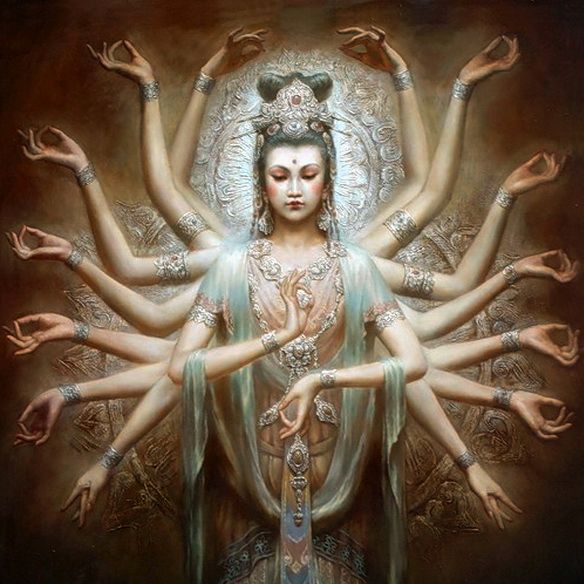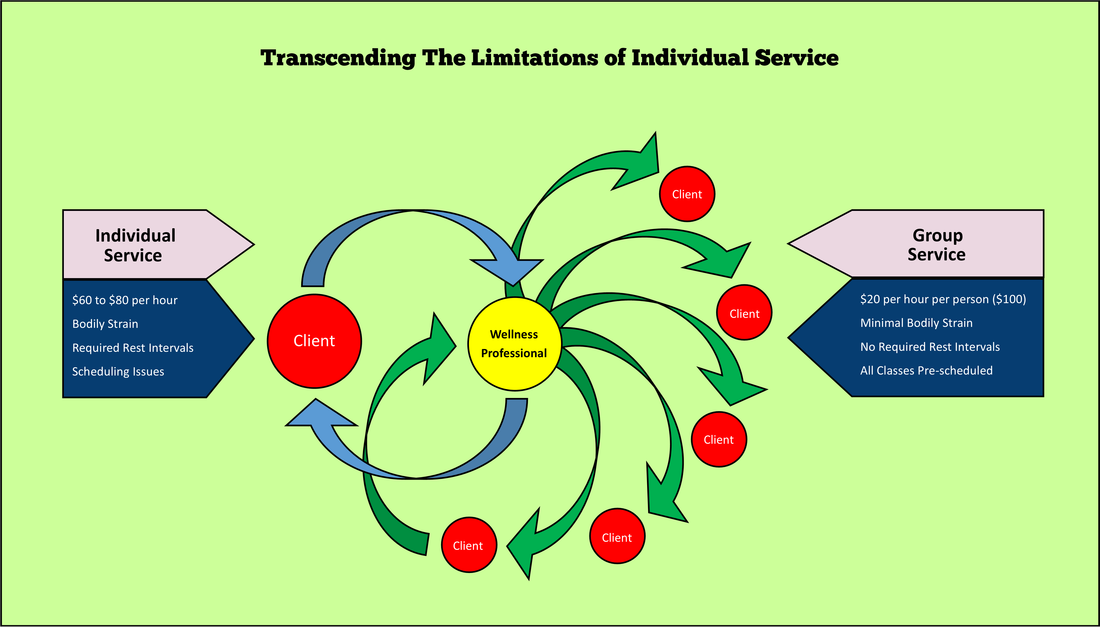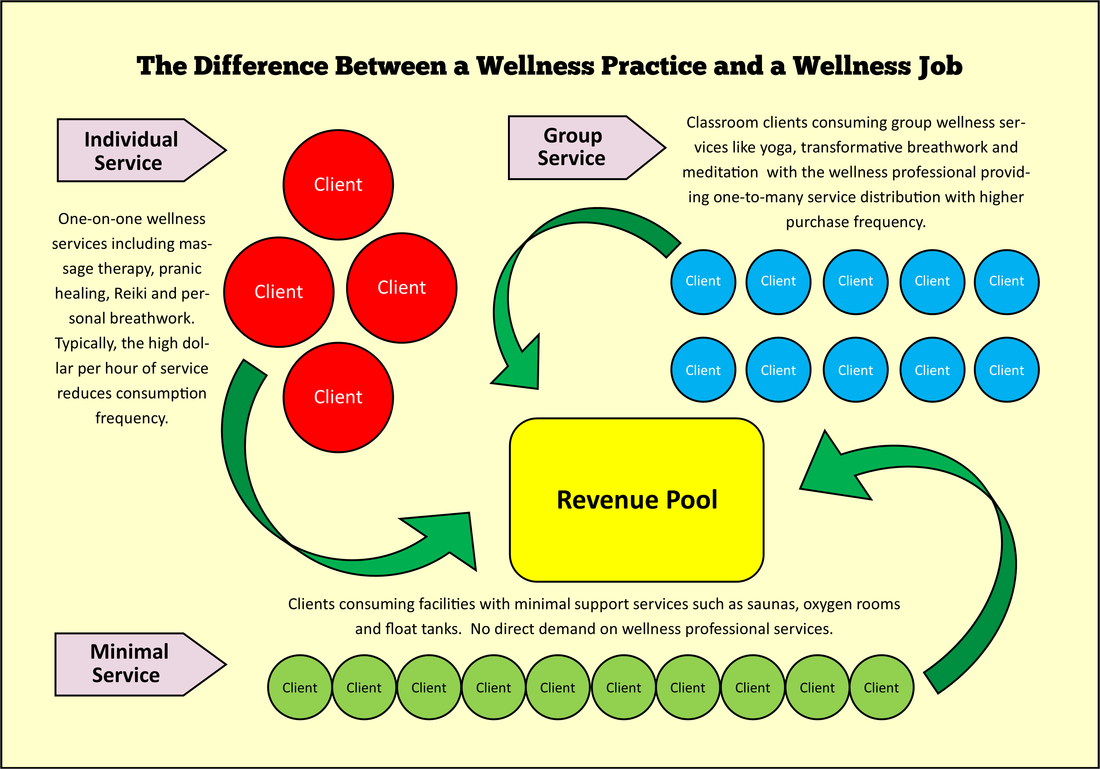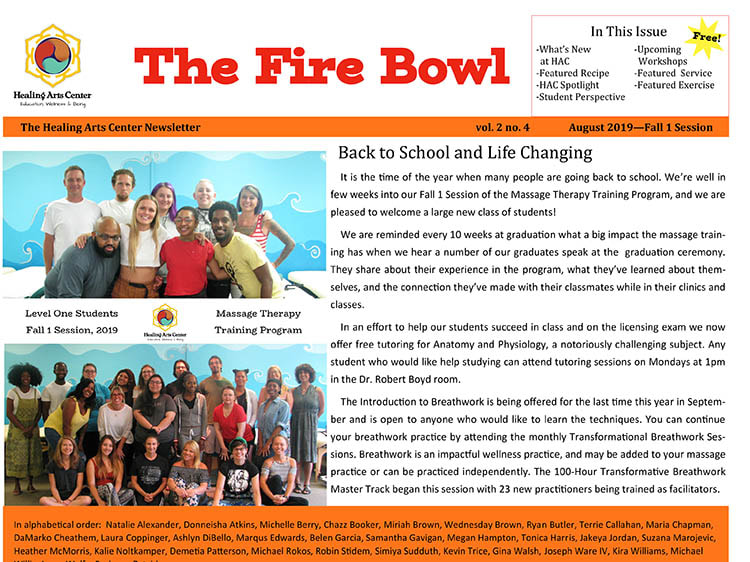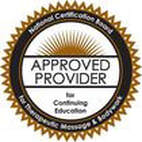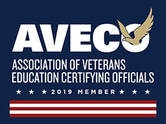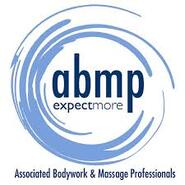
Is a Career in Massage Therapy Your Path? Take the Free Quiz
Training In A Spectrum Of Holistic Healing Techniques Can Make All The Difference Between Having A Job As A Wellness Worker And Creating A Wellness Practice
of Myofascial Release, one of the most useful massage modalities for injury recovery, scar rehabilitation and sports recovery. Our students start clinical practice after their first term in school. HAC is nothing if not a “learning by doing” school. Our students will spend the better part of a year working on the public so that when they graduate they are as comfortable with clients as they are with their friends. Like most massage therapists nation-wide, roughly 60% of our graduates will wind up running their own independent wellness practices. And this is the new gold standard at HAC: comprehensive wellness practice. For decades we have taught our students how to expel anxiety, accelerate injury recovery and manage well-being on an energetic level. Our students provide thousands of treatments to clients in our Student Clinic every year. For the past two years, they have been providing wellness services to people who are in treatment for cancer in conjunction with many local oncology care providers. This year we made a large step forward by offering Master Tracks in transformative breathwork and advanced energy medicine. The subject matter of HAC’s first-ever Master Tracks were specifically chosen because they radically expand the service offerings of wellness workers creating a palette of services instead of massage-only service. This allows practitioners to not only expand into the general wellness market space, but to also offer some services like transformative breathwork, out of the confines of the one-on-one provider-to-client revenue stream by empowering wellness professionals to provide both individual and group services. This creates not only more robust earning potential because of a vastly expanded value-of-service proposition, but it provides the modern wellness professional to rest and recover by taking a break from the physical rigors of providing massage therapy. Furthermore, the HAC Master Track educational strategy works in reverse. In other words, a student can start with HAC Massage Therapy Training Program (MTTP) and develop a strong educational base in holistic healing and wellness, or start with the shorter and less-expensive breathwork or advanced energy medicine programs to get started. Ideally, a well-rounded wellness professional would have all of the training in all of these practice and would add others to the mix. Adding skill sets broadens the healing power of the practitioner. This is a simple fact, but it has an important ramification. It places the emphasis of the practice on healing and wellness rather than on a particular healing art. A massage therapist, for example, who is also a certified breath-worker, transcends the label of a single art an becomes something more. Not only is this a more economically practical way to earn a living, it is more useful to the client base who are no longer stuck with the one thing that the practitioner knows how to do, but can receive treatment in modality that is best suited for the client's health. The most successful wellness practitioners have a wide variety of knowledge in a broad spectrum of holistic health practices. Like any profession, each wellness practitioner will drill down and establish a deep base in the areas of practice that interest them the most. Depth and breadth, by definition, defines the dimension of a wellness practice. HAC is committed that its graduate community have the diversity of skills necessary to make the most of their market space while developing deep-dive expertise that helps augment a wellness practice with a smaller set of specialties on which reputation in the health and wellness community depends. An additional advantage to diversification is that clients are far more likely to "cross over" from one service to another since they are available at the same place. This is only natural. Seeking additional training or creating strategic partnerships with other wellness practitioners to create a diversity of service that approaches comprehensive wellness care only makes sense. The point is to create wellness communities that empower clients to take on wellness practices and personal transformation. It is the concentrated energy of a community that creates motivation for clients to take on their well-being in significant ways. Classes for example, tend to create bonds between students that become training "families" and social networks that make it much easier for an individual to stay motivated. The massage therapy business has gone through some important changes over the past fifteen years or so. In the early 2000s we saw for-profit vocational schools attempt to mass produce massage therapists and this lead to a labor glut by 2005. Since then, however, the number of people receiving massage therapy certification in the United States has diminished by 50%. This has created a shortage of massage therapists in nearly every market while independent practitioners compete with corporate franchise operations for customers. Diversification of wellness services means that every type of massage therapy provider can expand beyond the limits of massage therapy alone. Recently, Massage Envy, for example, began offering assisted stretching to its therapeutic offerings hoping to attract amateur athletes as a potential customer. This move makes a great deal of sense in that stretch customers will quite likely cross over to massage customers and vice versa. With pamper massage representing less than 15% of all massage in most markets, massage therapy must evolve with the times. HAC intends to continue its educational expansion to train its graduates to become “well-rounded” holistic health and wellness professionals. We are expanding our business training to include entrepreneurial studies and are considering creating a business incubator for wellness professionals. We will be offering additional Master Track courses to promote the expansion of holistic wellness practices and that benefit both mind and body. Our transformative breathwork training is not only useful to bodywork clinicians, but it has a substantial potential in the psycho-therapeutic world. Transformative breathwork is famous for its tendency to permanently release deep psychological trauma from clients well beyond the capacity of “talk therapy”. It is our opinion that we are at an important crossroads in health care. While the politicians play games with health care coverage they are endangering the lives of millions by hacking at a medical care establishment that is already bloated and inefficient. The cultural impact is that most Americans can simply no longer afford to get sick. More than at any other time in history is there an urgent need for relatively inexpensive wellness care that can be made available to nearly everyone. And yet, despite this rapidly growing need, there are very few schools in the United States that can competently provide this type of wellness care training. That has now changed at least in this region, but comprehensive wellness needs to become a social norm in every region and not just major metropolitan areas. This require a considerable education process and for innovators to create wellness platforms that are truly comprehensive. Fragmented wellness care only makes the cost of wellness higher and harder to achieve for the public. The best solutions will be one-stop clinics that can manage the five (5) major areas of wellness which are musculoskeletal care, detoxification, mind and energy management, nutrition and fitness. There are a wide array of practices that impact these areas of wellness, some requiring one-on-one care, some deliverable in a class setting and some deliverable by facilities such as saunas with minimal human assistance. It is certainly in the best interest of the client to have access to as many of these wellness services as possible in a single place. Consolidation of wellness care radically improves the likelihood that the client will get a wider spectrum of care producing a substantially healthier outcome. About the AuthorDavid Kenyon is the president of The Healing Art Center in St. Louis, Missouri. He is an attorney by training who develops small-cap businesses, especially those companies that create jobs in the local economy. For most of his adult life, Kenyon has been a Buddhist practitioner in the Kagyu lineage of Tibetan Buddhism and has some monastic training. His unique view that business is meant to be a compassionate practice that simultaneously provides prosperity for business owners while providing benefit for the community has lead to the development of what he calls "karmanomics". Kenyon teaches a twenty-hour entrepreneurial training track inside HAC's business class as part of its Massage Therapy Training Program. |
Healing Arts Center News
Keep up with what's happening at the Healing Arts Center.
Follow us on Social Media:Read the Fire Bowl School Newsletter:
Categories
All
|
*The Healing Arts Center is proudly accredited by the Accrediting Commission of Career Schools and Colleges (ACCSC) for the 600-hour massage therapy training certificate only. ACCSC does not accredit individual Master Track courses or CEU offerings separately for this or any institution.
Follow Us Online:
© Copyright, The Center For the Healing Arts, LLC, 2020
